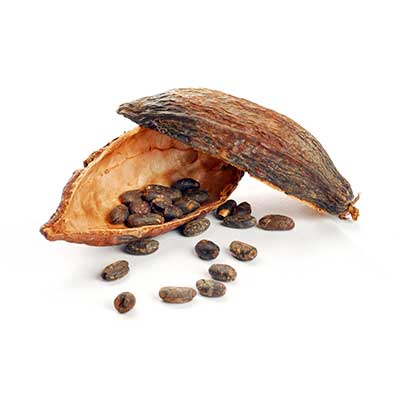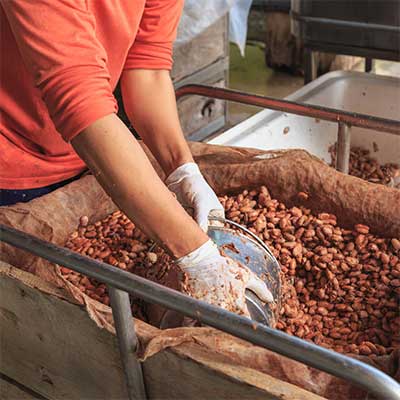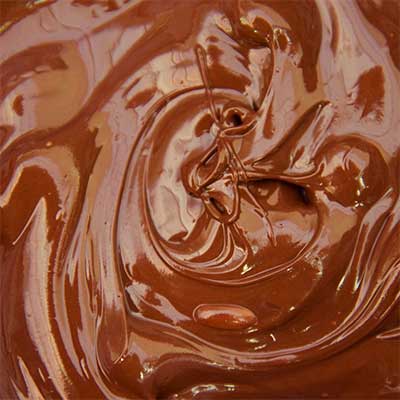From Tree to Supermarket Shelf
It’s a common trait for those of us residing in the Western world, to take for granted what we find in the supermarket and not give much thought to how it actually got there.
Chocolate is no exception.
Chocolate comes from a fruit called cacao that is cultivated in areas around the world, such as Central and South America.
Did you know that these trees need to be kept in a hot, wet climate and so can only grow within 20 degrees of the equator (with only a few exceptions!)
So, how does it work?
Well, the farmers firstly have to collect pods from the trees once they’re ripe. After cutting down the pods, they use machetes to open them up, scooping out the seeds by hand and setting them aside in large piles.
After the seeds (or beans) are removed from the pods, the next stage is fermentation. Traditionally, this takes place in a wooden box placed in the sun and covered in banana leaves. This takes between 2-7 days (depending on the bean type and climate).
Next, the beans are laid out to dry, which takes about a week. They need to be fully dried before shipping, otherwise mould can form – and we really don’t want that!
The beans have now entered a new stage; they are now owned by the chocolate maker.
Once received, the maker must sort the beans to remove dirt and rocks etc. They are then roasted! The beans next need to be winnowed (this just refers to removing their outer husks, breaking them down into smaller pieces that you might have heard called ‘nibs’).
Grinding is the next part of this long, refined process. Stone or metal grinders can be used!
We’re nearing the end of the chocolate journey, now. Conching the chocolate allows the mixture to be pulverised into tiny particles. This combines together the cocoa solid and cocoa butter, suffering cacao’s hard flavour and smoothing the texture.
During this stage, the chocolate is continually mixed to release the bad flavours during fermentation. When we say ‘conch’, we just mean introducing air into the chocolate, meaning the bitterness will evaporate, softening the overall flavour.
Finally, we must temper our chocolate. This refers to the heating and cooling process. It ensures the the fat molecules in the chocolate are stabilised – a crucial step to making it glossy and durable; the kind of melt in your mouth not in your hands product that we have come to expect from this delectable confectionery.
Tempering involves heating the chocolate to about 46 degrees Celsius, then cooling to 28 and following this, turning it into truffles and bars.
Bars will take a few hours to fully set – the aim of the game is to have them shiny, bearing a strong snap when they are broken.
So, now you know just how much work goes into every single bar, do you think you’ll view your next chocolate purchase a little differently?






